The Best Off Grid Heating Methods
Introduction To Off Grid Heating
If you’re Living off the grid already or planning to in the future, you already know how important it is to have a very reliable and highly efficient heating system for your home. Off grid heating is the process of keeping your home warm without relying on the grid or any external power source. This can be challenging, especially in colder climates and during winter months, but it is also rewarding and satisfying to curl up to a warm heat source that will never go down regardless of the weather outside.
Right now here in Canada we are experiencing a historical deep freeze and brutally cold winter, especially across the Prairies. The electrical grid is being pushed to its limits in this frigid cold and that’s all the more reason to live off grid and not be dependent on it for things such as heating a home.
Off grid heating also has some perks besides the obvious. It truly does give you a sense of independence and self-reliance, as you are not dependent on anyone else for your personal comfort and well-being. Like all things off the grid, it has to be done. And done right from the start. When considering your primary off grid heating source take the time to conduct thorough planning, research, and an upfront cost investment to that system. Right here is a great place to start. Whether it’s a traditional wood stove, a propane wall heater, solar thermal panels, or even the equipment you may need for harvesting wood, planning it all out before you build will save you time and money down the road.
In this article, we will give you an overview of different off grid heating methods and how to choose the best one for your home. We will also provide you with some recommendations and links to some of the best products and services on the market, so you can make an informed decision and enjoy a cozy and warm off grid home. We’ll also share with you what methods we personally choose to use for our off grid home here in Nova Scotia.
NOTE: We’ve partnered with two well know and trusted businesses that specialize in off grid equipment and can offer you special rebates, savings, discounts and more! Before you buy any off grid appliances, solar system, or off grid heating equipment be sure to check out the following websites!
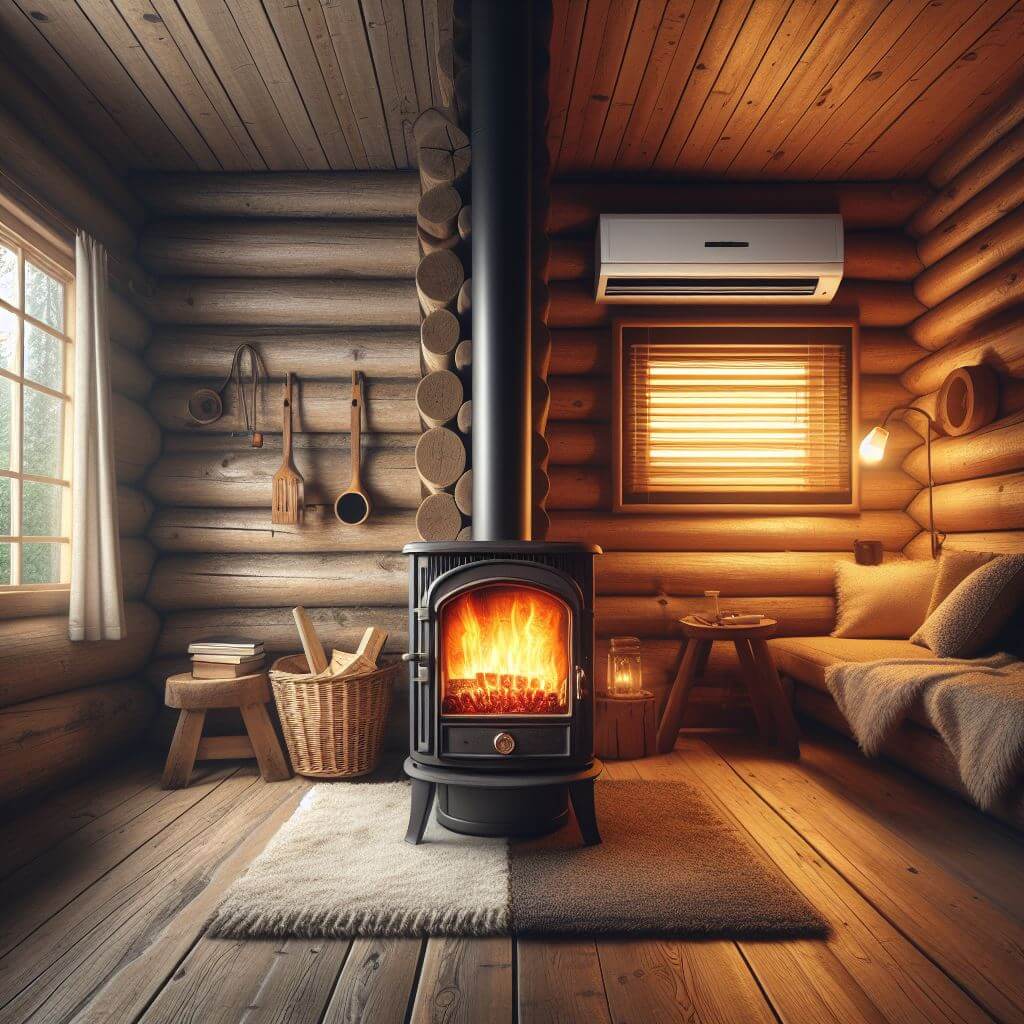
Table of Contents
Factors to Consider When Choosing an Off Grid Heating Method
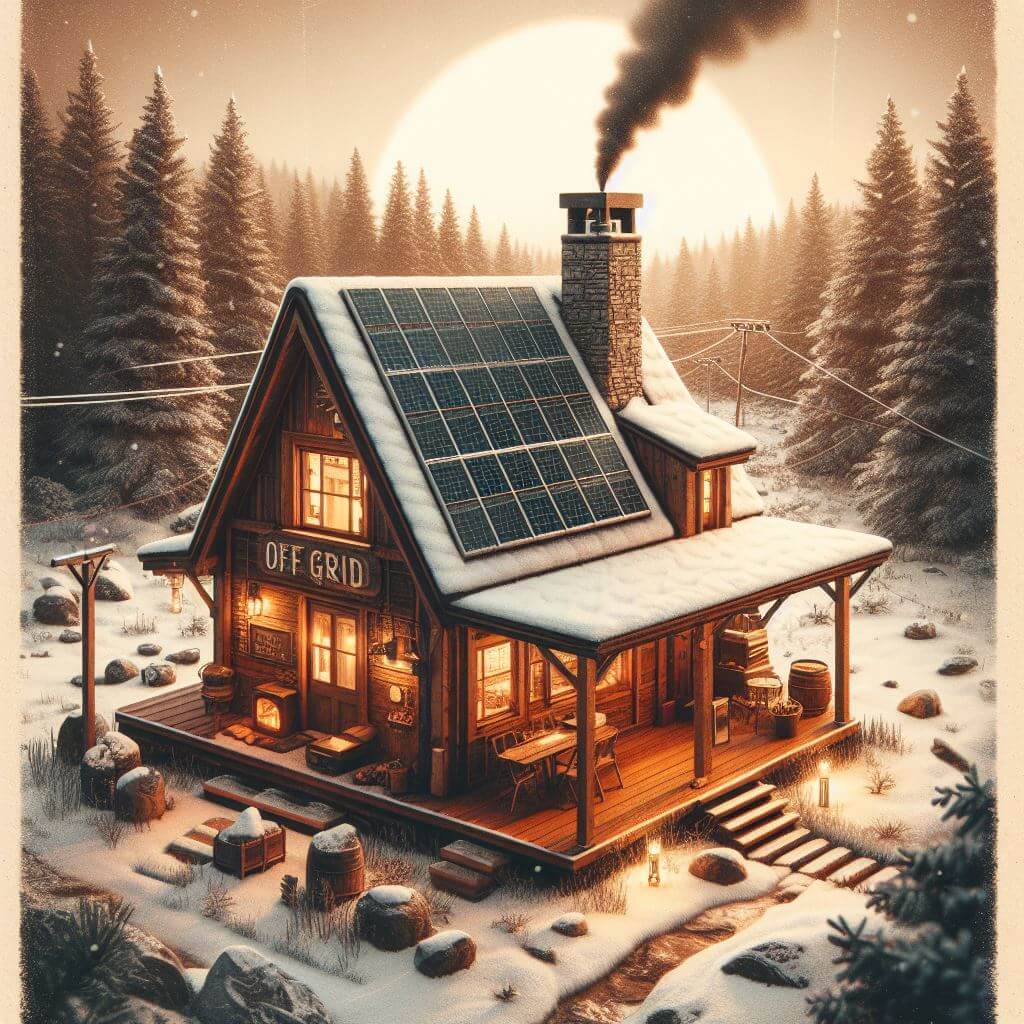
There’s no one-size-fits-all solution when it comes to off grid heating. In fact, we highly suggest having a primary source of heat and a secondary as a backup. Different heating methods have different advantages and disadvantages, depending on various factors. Here are some of the most important factors to consider when choosing an off grid heating method for your home:
Climate
The climate of your location plays a major role in determining your heating needs and options. For example, if you live in a mild or warm climate, you may not need a lot of heating, or you may be able to rely on passive heating methods, such as solar thermal panels or radiant heat. On the other hand, if you live in a cold or snowy climate like we do, you may need a more powerful and reliable heating system, such as a permanently mounted propane wall heater or a wood stove. You also need to consider the availability and cost of fuel sources, such as wood, propane, or the energy demand on a solar system.
Up here in Canada we’re all about the reliability of a high quality wood stove at our off grid home.
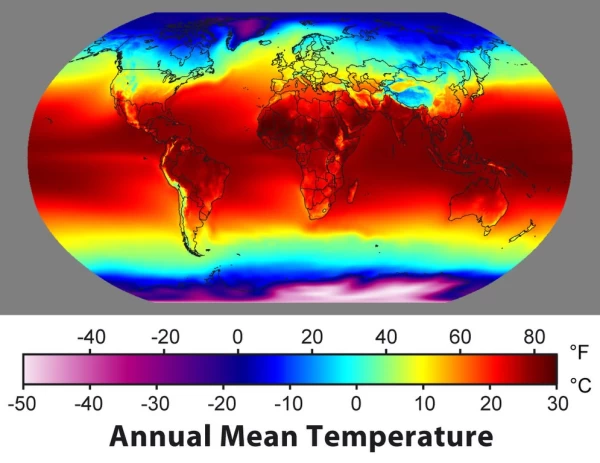
Budget
Your budget is another important factor to consider when choosing an off grid heating method. You need to think about how much money you are willing to spend on your heating system, both initially and in the long run. Some heating methods, such as heat pumps or solar thermal panels, may have a high upfront cost, but they can also save you money in the long run by reducing your energy consumption and maintenance costs. Other heating methods, such as propane heaters or wood stoves, may have a lower upfront cost, but they can also incur higher ongoing costs due to fuel and maintenance expenses. While the reliability and simple operations of our wood stove have it’s perks, there’s that element of harvesting and processing fire wood.
If splitting wood is your jam then check out the Kindling Cracker article we wrote.
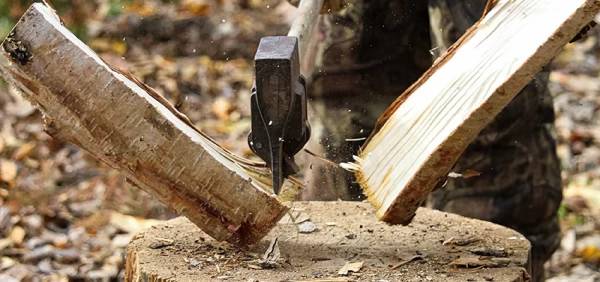
Efficiency
Efficiency is the measure of how much heat a heating system can produce per unit of energy consumed. The higher the efficiency, the less energy and money you will waste on heating your home. Efficiency is affected by various factors, such as the design, installation, and maintenance of the heating system, as well as the insulation and thermal mass of your home. You can improve the efficiency of your heating system by choosing a high-quality and well-sized product, installing it properly and safely, and maintaining it regularly. You can also improve the efficiency of your home by insulating and draft-proofing it, enhancing its thermal mass, and using smart thermostats and heating controls.
We wrote an articles on how to select and install the perfect front door and how to properly install vinyl windows that are a must read if you really want to take your insulation game to the next level.
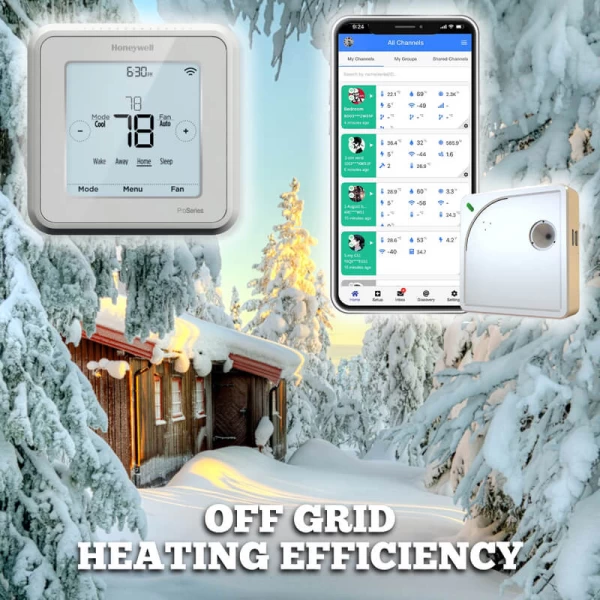
Safety
Safety is another crucial factor to consider when choosing an off grid heating method. Some heating methods, such as propane heaters or wood stoves, can pose potential risks and hazards, such as fire, carbon monoxide poisoning, or gas leaks. You need to be aware of these risks and take precautions to avoid them. For example, you need to install smoke and carbon monoxide detectors, vent your heating system properly, and keep flammable materials away from it. You also need to follow the manufacturer’s instructions and safety guidelines, and consult a professional if you are unsure or have any questions.
We have a security system that not only has cameras but also monitors the internal and external temp of the cabin and can remotely alert us. We shared some of these items in our choose the right off grid gift article and also in our article about how to score the best off grid deals online!
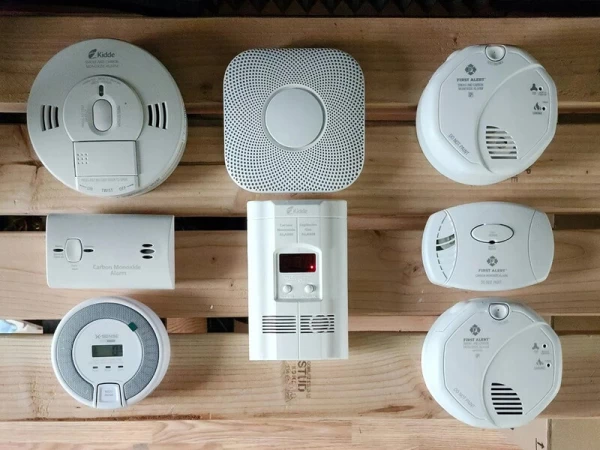
The Best Off Grid Heating Methods for Your Home
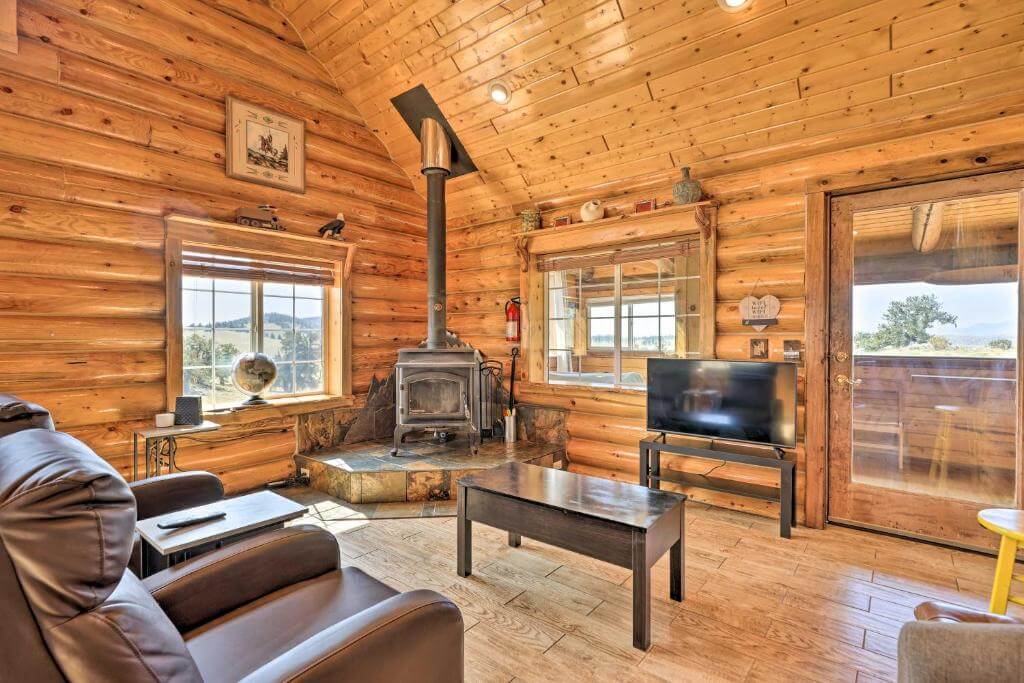
Now that you know what factors to consider when choosing an off grid heating method, let’s take a look at some of the best options available for your off grid home. We’ll describe how each method works, its pros and cons, and we will also provide you with some links to some of the best products and services on the market. We’ve partnered with only a few reputable off grid businesses such as Solar Power Store and The Cabin Depot Canada and The Cabin Depot USA.
Here are the best off grid heating methods for your home:
Wood or Pellet Stove
The lowest cost option to heat an off grid home for those who choose to process their own wood supply is a wood stove. It can provide more than enough heat and ambiance for any off grid enthusiast. However, a wood stove requires you to manually feed wood that has been processed, stored and properly seasoned. A pellet stove on the other hand burns tiny recycled wood pellets that are automatically fed into the stove that can greatly reduce the workload and requirement to tend to fire in the middle of the night. Both the wood stove and pellet stove consists of a firebox, where the fuel is burned, and a chimney, where the smoke and gasses are vented outside.
They can be either freestanding or insert, depending on whether it is placed on the floor or inside an existing fireplace. Like the propane wall heater a wood stove or a pellet stove can also have a dedicated blower that distributes the heat more effectively throughout the home or a small stove top fan that operates from a heat differential.
NOTE: A typical pellet stove may draw an average of 400 watts while the igniter is initially burning the pellets and then an average of 50 watts to maintain the burn. A typical 40 pound bag of pellets may cost between $4 – $9 and could roughly cost $35-$45 a month to heat a home.
The Drolet Escape 1800 Wood Stove
Englander 25-CBPAH Pellet Stove
Ecofan® AirMax, Classic Styled, Heat Powered Wood Stove Fan
Wood and Pellet Stove Pros:
- Provides cozy and natural heat for your home, creating a warm and inviting atmosphere.
- The wood stove is 100% independent of power, as it does not require any electricity or gas to operate.
- If you process firewood on your property then there is little to no cost for wood.
- Pellet stoves can be relatively cheap to operate, depending on the availability and cost of wood pellets in your area.
- Pellet stoves also emit heat more consistently than wood stoves.
Wood and Pellet Stove Cons:
- They can consume a lot of wood or wood pellets, which can be bulky and heavy to store and transport.
- Can pose safety risks, such as fire, burns, or carbon monoxide poisoning, if not used or maintained properly.
- Can be messy and smoky, as it produces ash, soot, and smoke. Fire boxes MUST be cleaned out often and properly.
Ventless Propane Wall Heaters
A ventless wall mounted propane heater is a type of space heater that does not require any venting to the outside. It burns propane gas and releases the combustion products, such as water vapor and carbon dioxide, into the room. Propane wall heaters work by igniting propane gas from an exterior storage tank with a spark or a pilot light, which then ignites a larger main burner. The warm air is then distributed throughout the room using a blower fan or a convection process. Smaller portable space heaters like the HeaterBuddy should only be used as a secondary backup to your primary heating source.
Dyna-Glo 30,000 BTU Natural Gas Blue Flame Vent Free Wall Heater
18,000 BTU Big Buddy Portable Propane Heater
Propane Heater Pros:
- Can provide instant and powerful heat for your home, especially in cold climates and during power outages.
- Great for maintaining a low constant internal home temp while away for extended periods.
- Can be easily installed and operated, as it does not require any electricity or ductwork.
- Can be relatively inexpensive, depending on the size and quality of the heater.
Cons:
- May consume a lot of propane gas, which can be costly, hard to transport and scarce in some areas.
- Can pose safety risks, such as fire, explosion, or carbon monoxide poisoning, if not used or maintained properly.
- Can be noisy and smelly, as it produces combustion noises (expands and contracts when it heats and cools) and odors.
Direct Vent Propane Wall Heaters
A direct vent propane wall heater is similar to the ventless wall heater in that it burns propane gas to produce heat but this method vents it directly outside through a wall. A direct vent propane wall heater consists of a pilot light that stays lit, a main burner, where the propane gas is ignited, and a vent, where the combustion gasses are expelled outside. They can be either manual or thermostatically controlled, depending on whether it has a knob or a thermostat that controls the temperature. Some wall heaters like ours require no electricity as it runs on a millivolt system using a thermopile. A direct vent propane wall heater can also have a fan or a blower that distributes the heat throughout the room.
Thermopile: The pilot light flame (which stays on) heats a small metal device called a “thermopile”. The thermocouple is the heat-sensitive safety device that prevents the release of unburned gas. The initial flame of the pilot heats the thermocouple, which will signal the valve to stay open and keep the pilot lit and the propane heater functioning.
Martin Propane Direct Vent Heater MDV12VP 11000 BTU
Pros:
- Can provide fast and efficient heat for your home, especially in small spaces or rooms.
- Can be easily installed and operated, as it does not require any electricity or ductwork.
- Safe and clean, as it does not produce any indoor pollution or moisture.
Cons:
- May consume a lot of propane gas depending on several factors.
- Can be noisy and unsightly, as it produces combustion noises and requires an exterior hole to vent gasses.
- Can be limited in its heating capacity, as it can only heat one room or space at a time.
Solar Thermal Panels
Many new homes are already incorporating solar thermal panels to offset energy costs. A solar thermal panel is a roof top mounted device that uses the sun’s energy to heat pipes containing water or air for a home. A solar thermal panel normally consists of a collector, which is a flat or curved plate that absorbs solar radiation and transfers it to a fluid, such as water or antifreeze inside the pipes. The fluid then circulates through a small solar powered pump or a thermosiphon to a storage tank, where it is stored until needed. The hot water or air can then be used for domestic purposes or space heating, depending on the type of system.
Thermosiphon: A thermosiphon is a method of passive heat exchange that circulates a fluid from a hot area to a cold area and back, using natural convection and density differences.
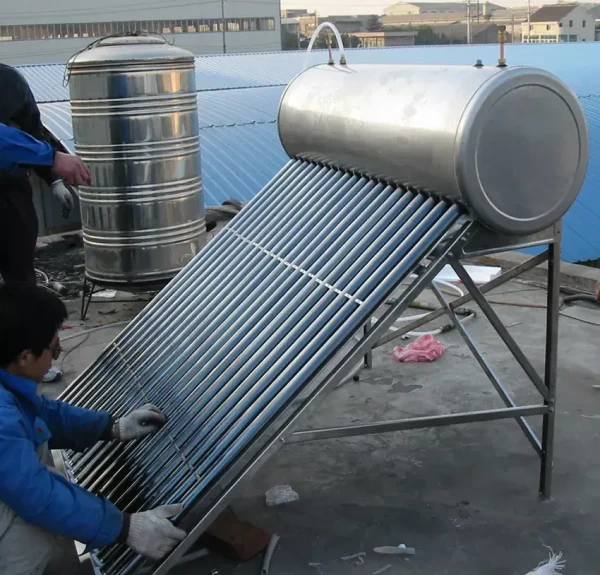
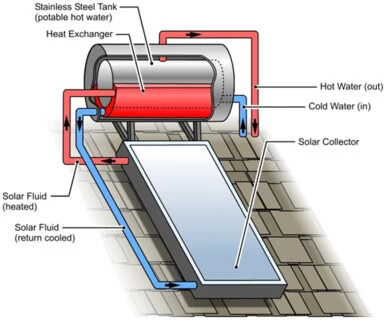
Solar Thermal Panel Pros:
- Can provide free and renewable heat for your home, using the power of the sun.
- Can reduce your energy bills and carbon footprint, as it does not consume any fossil fuels or emit any greenhouse gasses.
- Can be combined with other heating methods, such as a heat pump or a wood stove, to increase its efficiency and reliability.
Solar Thermal Panel Cons:
- May not work well on cloudy or rainy days, as it relies on the sun to generate heat. You may need a backup heating system or a battery bank to store excess energy for later use.
- May have a high upfront cost, depending on the size and quality of the system.
- May require regular maintenance and cleaning, as it can get dirty or damaged by the weather or debris.
Electric Heat Pump (Air Exchange)
An electric heat pump is a device that transfers heat from one place to another, using electricity as the power source. An air exchange heat pump, also known as an air source heat pump, extracts heat from the outside air and transfers it to the inside air, or vice versa, depending on the season. It may seem odd, but heat pumps warm your home by pulling heat from the outdoor air, even when temperatures are as low as -15C and some as low as -25C . They do this by using a coil containing liquid refrigerant, which absorbs heat from the air outdoors. An air exchange heat pump can provide both heating and cooling for your home, making it a versatile and efficient option.
Pros:
- An air exchange heat pump can provide both heating and cooling for your home, depending on the season.
- An air exchange heat pump can be powered by solar panels or a battery bank, making it compatible with off grid living.
- An air exchange heat pump is highly efficient, as it can produce more heat than the electricity it consumes.
- An air exchange heat pump is easy to install and maintain, as it does not require any ductwork or piping.
Cons:
- An air exchange heat pump may not work well in extremely cold climates, as the outside air may not have enough heat to extract.
- An air exchange heat pump may have a high upfront cost, depending on the size and quality of the system.
Geothermal Heat Pump (Ground or Water Exchange)
A geothermal heat pump, also known as a ground source heat pump or a water source heat pump, is a device that transfers heat from the ground or water to the air, or vice versa, depending on the season. A geothermal heat pump uses a loop of pipes filled with water or antifreeze that is buried in the ground or submerged in a water source, such as a pond or a well. The loop absorbs or releases heat from the ground or water, and transfers it to the heat pump, which then distributes it to the home through ducts or radiators.
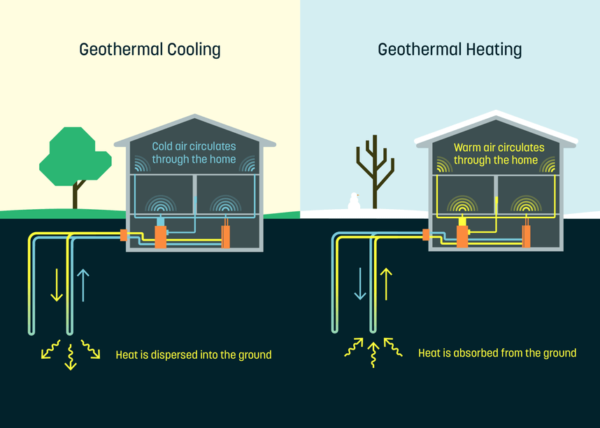
Geothermal Pump Pros:
- Can provide both heating and cooling for your home, depending on the season.
- Can be powered by solar panels or a battery bank, making it compatible with off grid living.
- Is very efficient, as it can produce more heat than the electricity it consumes.
- Is reliable and consistent, as it is not affected by the outside temperature or weather conditions.
Geothermal Pump Cons:
- May have a very high upfront cost, depending on the size and complexity of the system.
- May require a lot of land or water space, as well as permits and regulations, to install the loop of pipes.
- May need professional installation and maintenance, as it involves digging, drilling, or plumbing.
While some of these off grid heating methods might seem off the wall don’t let a good solar system and battery bank fool you . You can run just about anything given the right system. In fact we wrote an article called Harness the Sun that walks you through the true power a quality solar system can output. And if you’ve had folks say to you that “something can’t be done because you’re off grid” then send them our top off grid myths debunked article!
What We Personally Use For Off Grid Heating
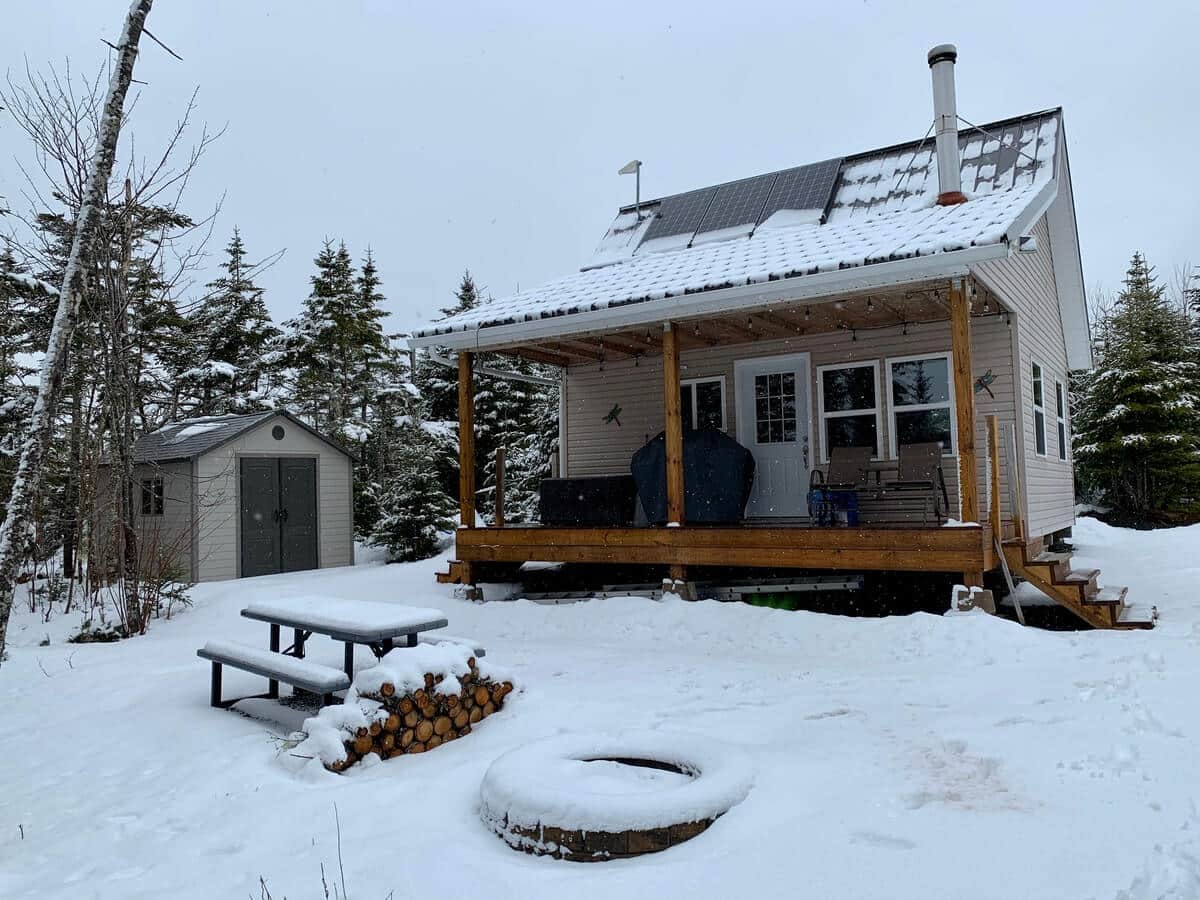
Wood Stove
As a primary heat source we use a 40,000 BTU Drolet Pyropak wood stove which is one of the smallest wood stoves that still has a glass door. That was a must for us!
The internal space of our cabin is 320 sq ft on the main floor with a pocket door to a bathroom and a pocket door to the master bedroom. We have an open loft with another 192 sq ft of space. We were very deliberate in how we designed our floor plan, the pocket doors, windows and placement of our heating sources. Check out our complete floor plan.
We placed our wood stove in the living room corner closest to the front windows so that we could easily vent excess heat if necessary and allow for a nearby fresh air intake since our cabin is extremely airtight. We also installed a window in the loft at the opposite end of the cabin to help vent excess heat if required. This is effective in both summer and winter.
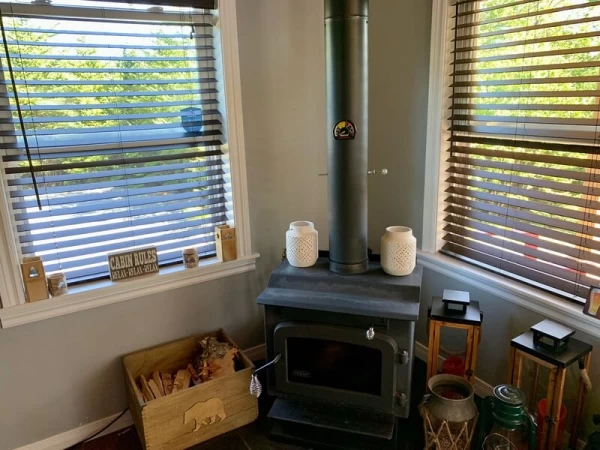
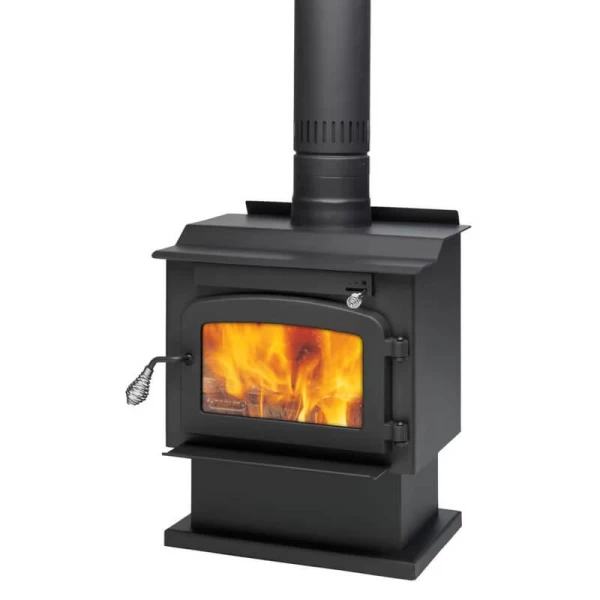
Drolet Pyropak Woodstove
- 1.3 Cu FT Firebox
- Heating Capacity up to 1,000 Sq Ft – 1500 Sq Ft
- Up to 40,000 BTU Output
- 82% Efficient
- Log Length up to 17″
- Variable Speed 100 CFM Blower (temp controlled)

We’re able to fill the wood stove up (3 pieces of birch 6”) before bed (10pm), almost close the damper so that it smolders all night, and then slide the master bedroom pocket door closed to keep our sleeping environment nice and cool. The temp of the cabin may climb to 26C throughout the night, peaking at around 2am, and then coming back down to around 20C by 7am. That’s on a night when it’s -5C. If it’s extremely cold around -20C then we may get up around 3am to put more wood on the fire. But that’s only if we don’t set the thermostat on our secondary heat source to come on automatically.
Direct Vent Propane Wall Heater
For a secondary heat source we have an Empire DV210 direct vent wall heater. We’ve used this Empire wall heater for seven years now without any issues or replacing a single component. It is very effective at maintaining the cabin temperature for those extended times when we aren’t there to feed the wood stove.
We have plumbed two 30lbs propane tanks together using a 2-stage auto changeover LP propane gas regulator and run the propane line up through the floor of the cabin and directly into the closure of the wall heater. We included an additional manual shut off valve and a sediment collection segment prior to the valve assembly at the base of the heater.
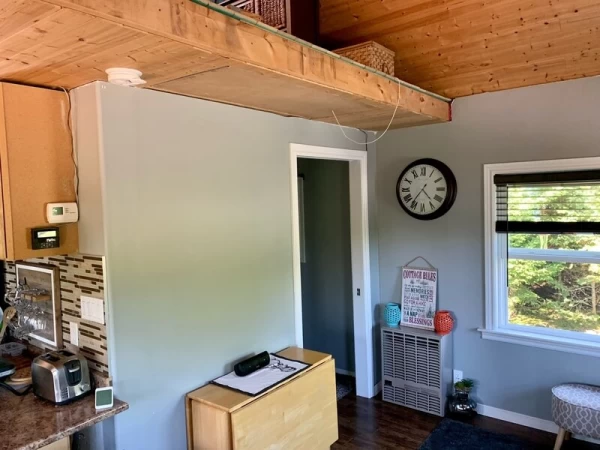
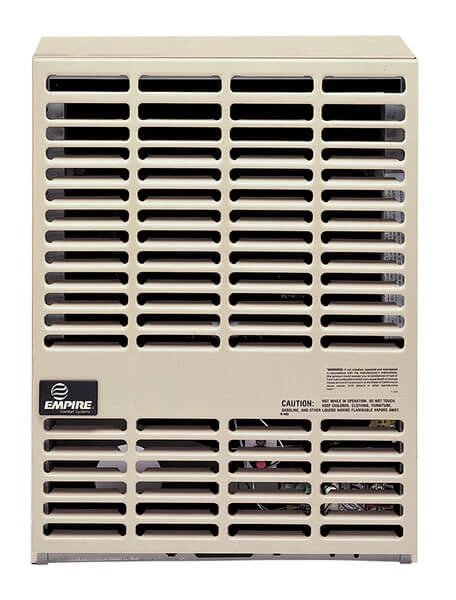
Empire DV210 Direct Vent Wall Heater
- DV210 (10,000 Btu) and DV215 (15,000 Btu)
- Millivolt Thermostat
- Slim, compact cabinet mounts on an outside wall.
- Quiet operation
- Matchless piezo ignition (heats without electricity)
- Optional automatic blower
NOTE: A gas valve and ground joint union should be installed in the gas line upstream of the gas control to aid in servicing. It is required by the National Fuel Gas Code that a drip line be installed near the gas inlet. This should consist of a vertical length of pipe tee-connected into the gas line that is capped on the bottom in which condensation and foreign particles may collect.
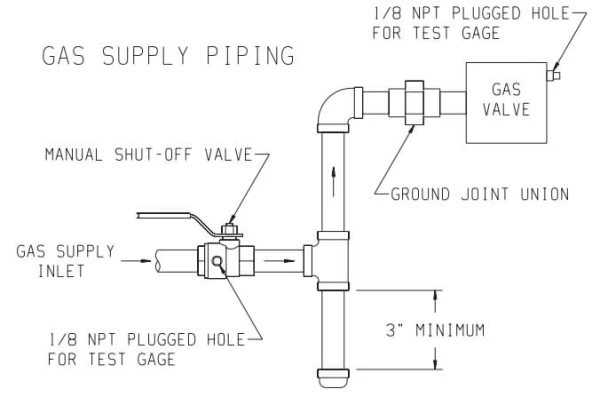
Digital Thermostat
The millivolt thermostat we use is the Saswell (SAS900STK-2) single stage programmable thermostat for 24 Volt or millivolt systems. We ran the 18/2 thermostat wire from the wall heater through the loft floor joists to the thermostat in the kitchen.
Saswell Digital Thermostat
Portable Propane Heater
As a third option for when we want to really heat up things fast or take the heat with us we have this Mr Heater Big Buddy portable heater. It has dual tank hookups and separate regulators that can feed two radiators. Since we have a propane line that comes in under the cabin floor to feed both the tankless water heater in the bathroom and the Coleman stove in the kitchen we can easily disconnect the stove and connect the portable heater. It has an integrated fan that can run on both batteries and a DC plug.
FYI: This portable heater can put out more BTUs of heat than our direct vent wall heater!
Mr. Heater Heater Big Buddy Portable Heater
- 4,000, 9,000, or 18,000 BTU per hour
- For use with propane gas
- Heats up to 450 sq. ft.
- Single control start knob
- Hi-Med-Low heat settings
- Swivel regulators
- Automatic low oxygen shut-off system (ODS)
- Accidental tip-over safety shut-off
- Connects to two 1 lb. cylinders
- Connects to a 20 lb. cylinder with optional hose
Since we have Starlink internet at the cabin we can remotely monitor everything from the solar system, the security cameras and of course the internal temperature of the cabin. We use a small thermometer called the WS1 WiFi Temperature Humidity Light and movement sensor.
Remote Temperature Monitoring
WS1 WiFi Thermometer
It can send us mobile notifications when the temp gets to a set low or high point. Also it monitors movement and illumination so we know if there’s a light left on. We also do have smart plugs and some lights installed that allow us to control the lights remotely and by voice. It might seem like overkill for most people living off the grid but out here, the only rules are the ones you make yourself.
Conclusion
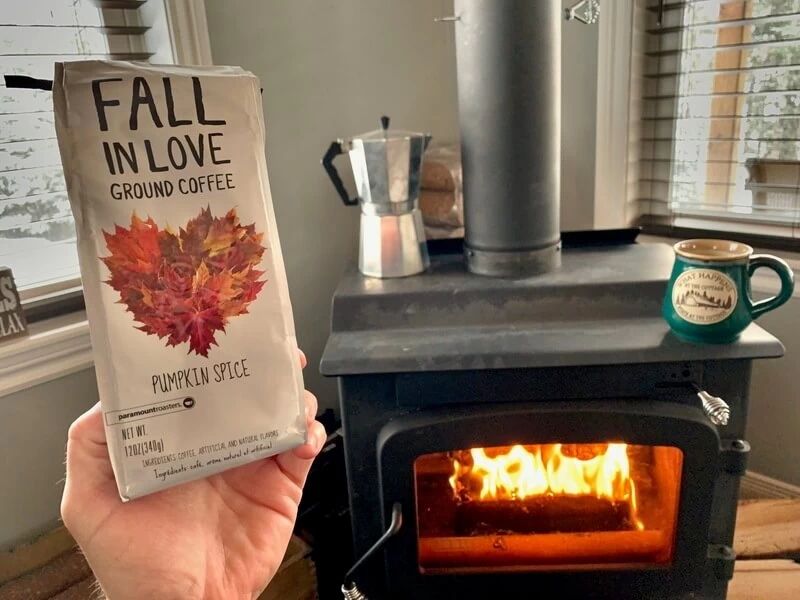
Off grid heating is a hot topic! It’s obviously one of the most essential aspects of off grid living and one of the most rewarding on a cold winter night. A wood stove or propane wall heater that is properly installed will keep you warm and comfortable for decades and for a very low operating cost. It’s a fantastic feeling knowing you’ll never be dependent on the grid for your warmth despite anything and everything mother nature can throw at you. It’s no fun hearing about people spending days and weeks without heat and/or power and being told their energy use is being limited by rolling blackouts. During those same major storms, we just throw another log on the fire, pull out the projector, log into our Starlink internet and watch netflix till it all blows over.
Remember though, off grid heating also requires careful planning, research, and there’s the initial investment. If your primary source is from processed wood then you need to prepare several months in advance. You want to choose the best heating method for your home, based on various factors such as climate, budget, efficiency, and safety. In this article, we’ve given you an overview of different off grid heating methods and how to choose the best one for your home. We have also provided you with some links to some of the best products and services on the market, so you can make an informed decision and enjoy a cozy and warm off grid home.
We hope you have found this article helpful and informative. If you have any questions, comments, or suggestions, please feel free to leave them below. We would love to hear from you and help you with your off grid heating needs.
If you liked this article, please share it with your friends and family who are interested in off grid living and homesteading. You can also subscribe to our newsletter to get more tips and tricks on off grid living and homesteading delivered to your inbox.
Thank you for reading and happy off grid heating!
FAQs
What is the most efficient off grid heating method?
- The answer to this question depends on various factors, such as the climate, the size, and the insulation of your home. However, generally speaking, heat pumps and solar thermal panels are considered to be the most efficient off grid heating methods, as they can produce more heat than the energy they consume. However, they also have some drawbacks, such as high upfront cost, dependence on weather, and maintenance requirements.
How much does it cost to heat an off grid home?
- The answer to this question also depends on various factors, such as the heating method, the fuel source, and the usage. However, generally speaking, off grid heating can be cheaper than grid heating, as you can use renewable and free energy sources, such as solar or wood. However, you also need to consider the initial and ongoing costs of the heating system, such as installation, maintenance, and fuel expenses.
How do I install and maintain an off grid heating system?
- The answer to this question depends on the type and complexity of the heating system. Some heating systems, such as propane heaters or wood stoves, can be easily installed and operated by yourself, as they do not require any electricity or ductwork. However, other heating systems, such as heat pumps or solar thermal panels, may require professional installation and maintenance, as they involve digging, drilling, or plumbing. You also need to follow the manufacturer’s instructions and safety guidelines, and consult a professional if you are unsure or have any questions.
What are the environmental benefits of off grid heating?
- Reducing greenhouse gas emissions: Off-grid heating can reduce the amount of fossil fuels that are burned to generate electricity or heat, which in turn reduces the greenhouse gas emissions that contribute to climate change. For example, solar thermal panels can use the sun’s energy to heat water, which can then be used for domestic hot water or space heating, without producing any carbon emissions.
- Increasing energy efficiency: Off-grid heating can increase the energy efficiency of the heating system, by using renewable energy sources or heat pumps that have a high coefficient of performance (COP). A COP is a measure of how much heat is delivered per unit of energy input. For example, a heat pump can have a COP of 3 or more, meaning that it can deliver three times more heat than the electricity it consumes.
- Promoting energy independence: Off-grid heating can promote energy independence, by reducing the dependence on external sources of energy that may be unreliable, expensive, or subject to price fluctuations. Off-grid heating can also enhance the resilience and security of the heating system, by avoiding the risk of power outages or disruptions in the grid.
Where can I buy quality off grid heating equipment online?
- There are many online platforms and websites that sell off-grid heating equipment, such as Amazon, Larger box stores (Home Depot, Lowe’s, Walmart). The best place to buy off grid appliances are at a dedicated off grid appliance store like The Cabin Depot or The Solar Power Store. There is a Cabin Depot for Canada and a Cabin Depot for the US. If you use our code OFFGRIDCABIN at the check out you can receive a discount! Some of the things that you should look for when buying off-grid heating equipment online are:
- The reputation and reliability of the seller, which you can check by reading the feedback, reviews, and ratings of previous customers.
- The description and specification of the equipment, which you can check by reading the product details, features, and dimensions.
- The warranty and return policy of the equipment, which you can check by reading the terms and conditions, guarantees, and refunds.
- The shipping and delivery options of the equipment, which you can check by reading the shipping methods, costs, and times.
Your Turn...
P.S. If you enjoyed this post about The Best Off Grid Heating Methods then why not share it.
Share This Story, Choose Your Platform!
It’s how we keep growing our off grid community here and lets us know we’re posting the right kind of info you’re looking for.
Here’s a special Pinterest PIN for all our Pinterest fans out there!
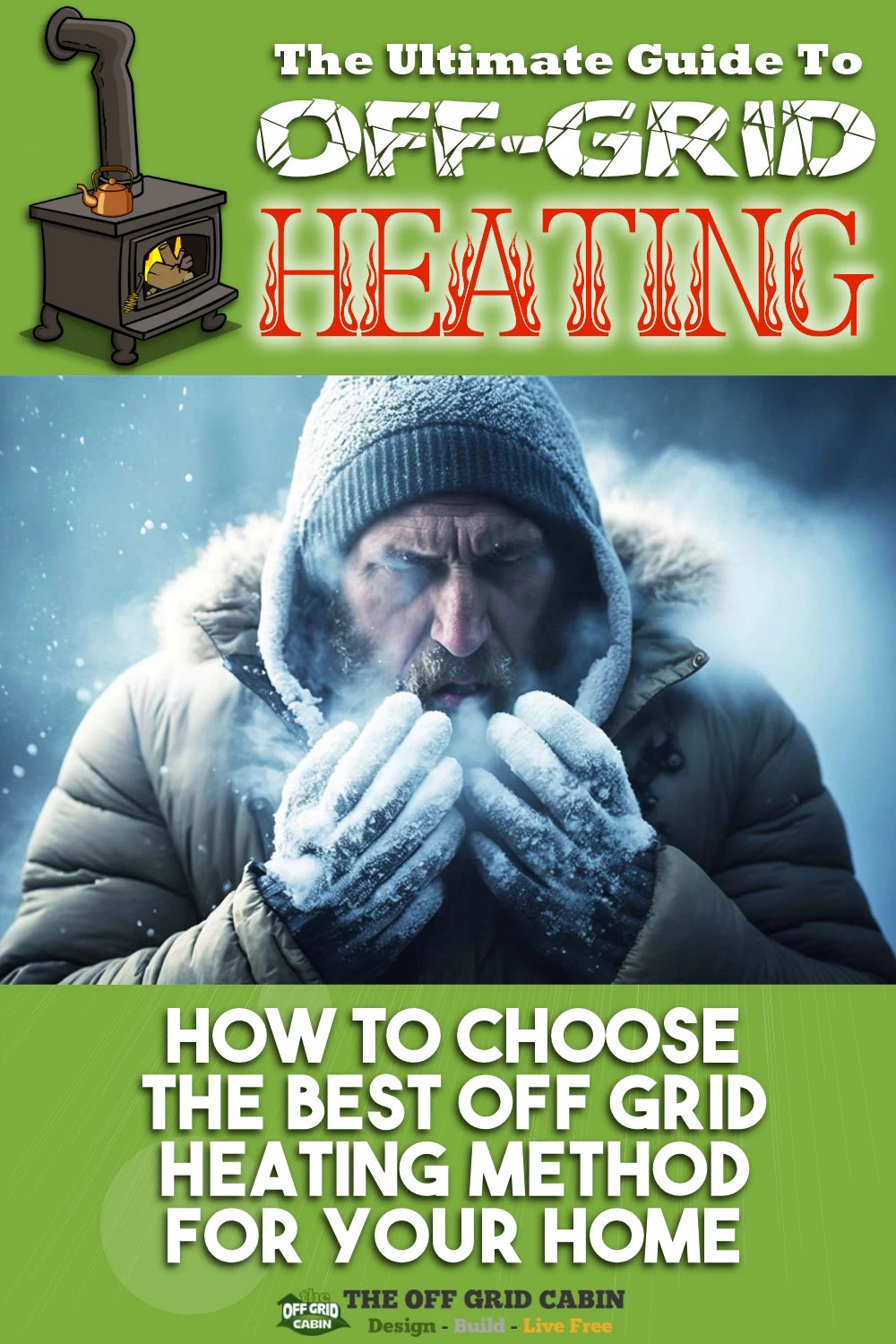
how to clean solar panels
How to Clean Solar Panels: A Step-by-Step DIY Guide As you already know, residential and off-grid solar systems are amazing sources of renewable energy that are quickly growing in popularity. The large flat [...]
earthship
What Is an Earthship and How It Can Help Save the Planet Imagine living in a home that is completely self-sufficient, eco-friendly, and comfortable. A home that grows its own food, collects its [...]
3-way-switch-wiring
3-Way Switch Wiring: A How to Comprehensive Guide Here at the off grid cabin we’ve done our fair share of electrical work including 3-way switch wiring. We’ve done all the internal and external [...]
solar generator
How To Find The Best Solar Generator Impact-Site-Verification: c336f89e-c692-4afd-99d9-0150f7329466 When we first cleared the land to build our off grid home back in 2016, we started with one of those small 700 watt [...]
Off Grid Heating
The Best Off Grid Heating Methods Introduction To Off Grid Heating If you're Living off the grid already or planning to in the future, you already know how important it is to have [...]
off grid appliances
The Best Off Grid Appliances for Off Grid Living Introduction To Off Grid Appliances Living off the grid can be a rewarding and fulfilling experience, but it also comes with some challenges. One [...]


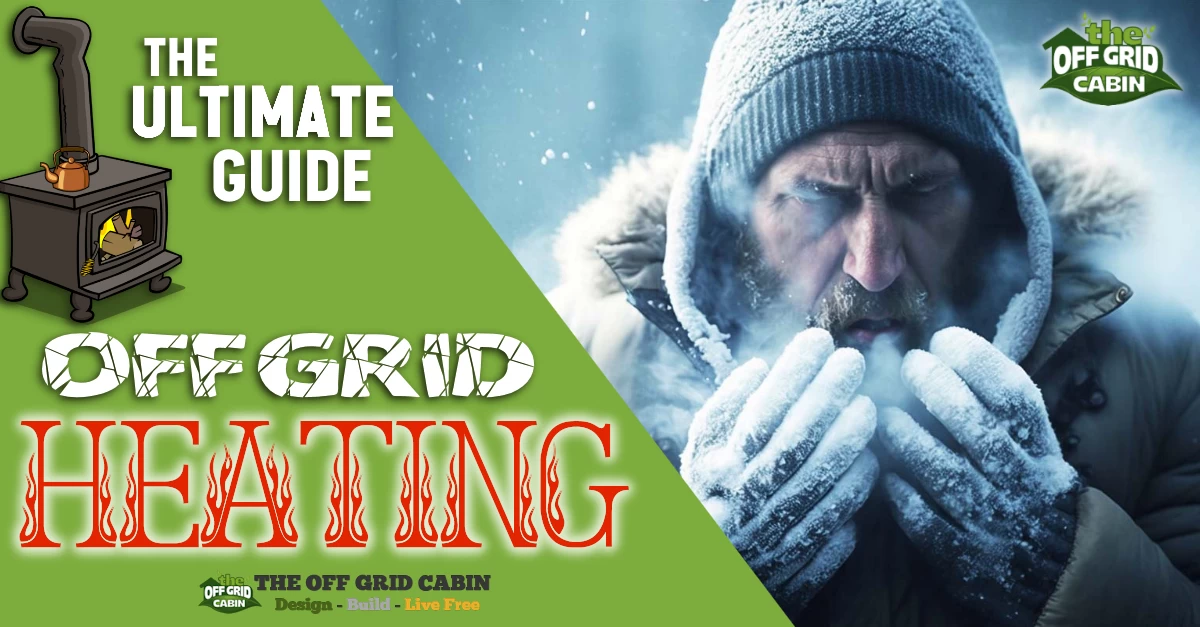

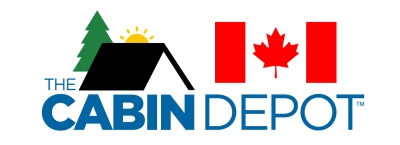
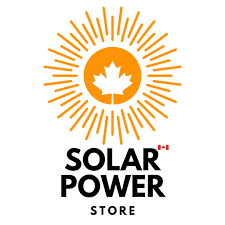
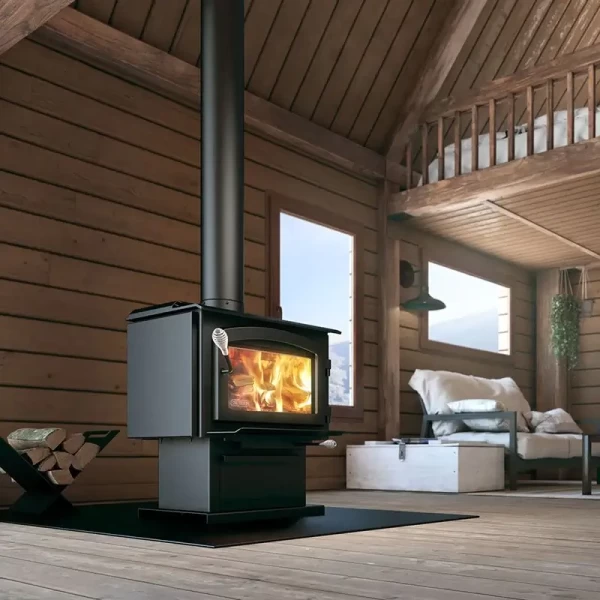
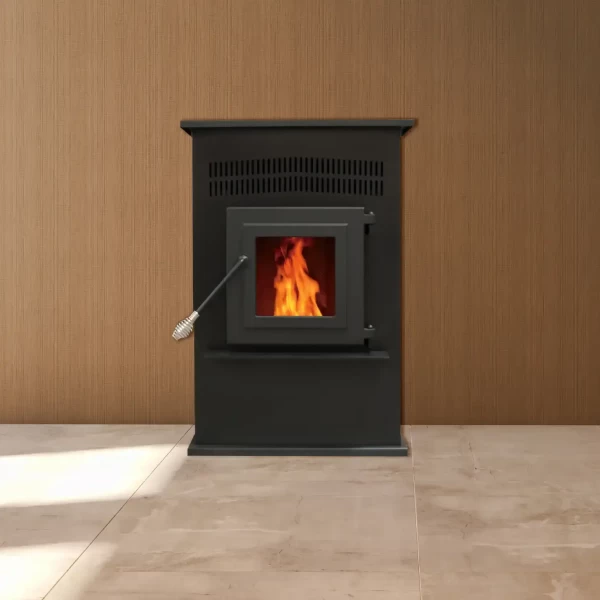
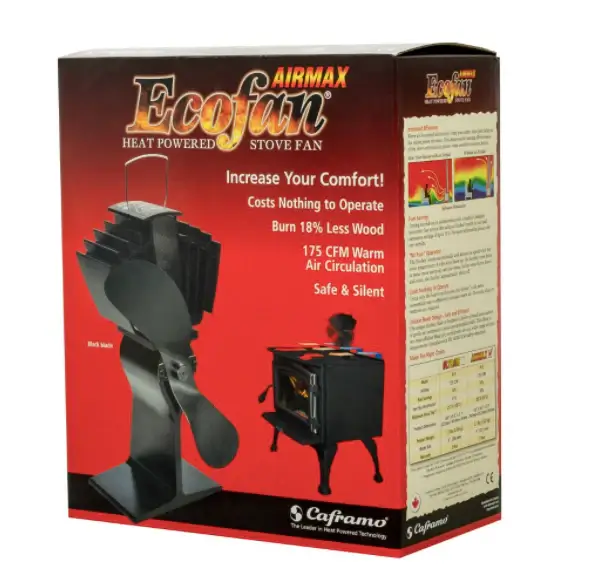

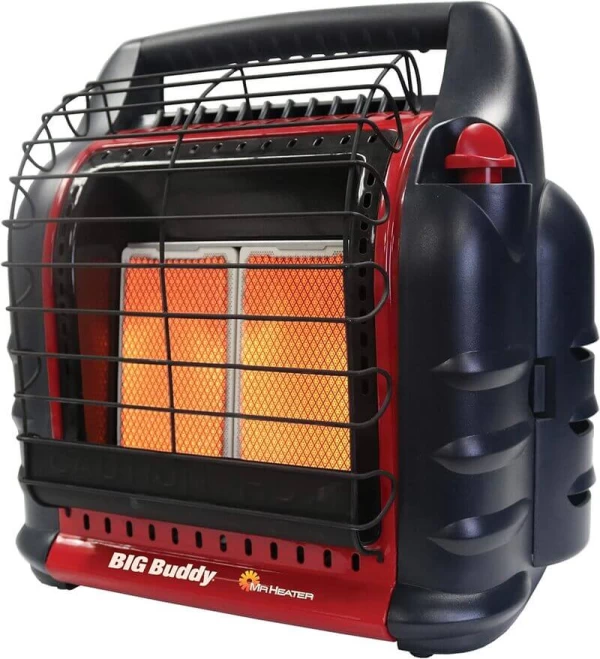
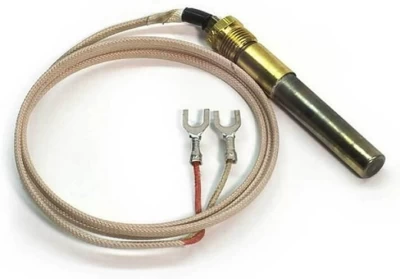
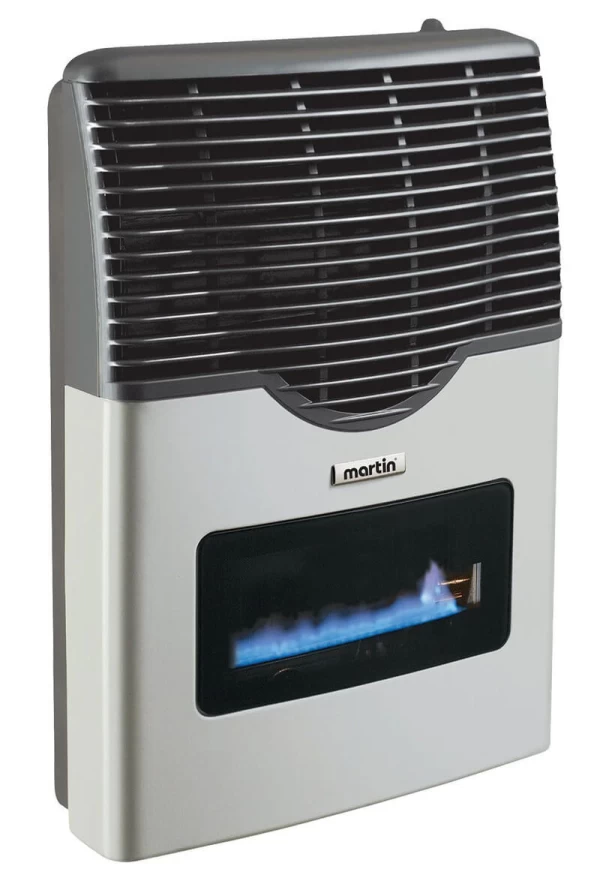
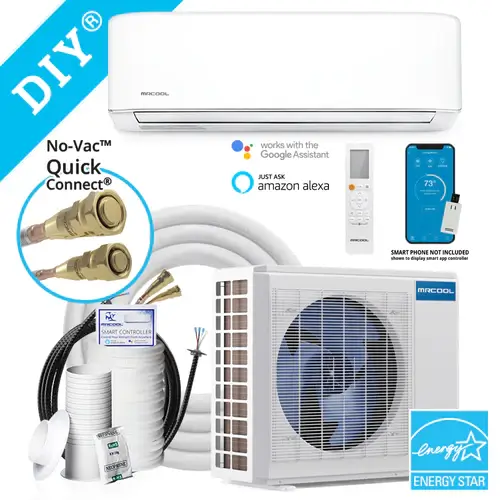
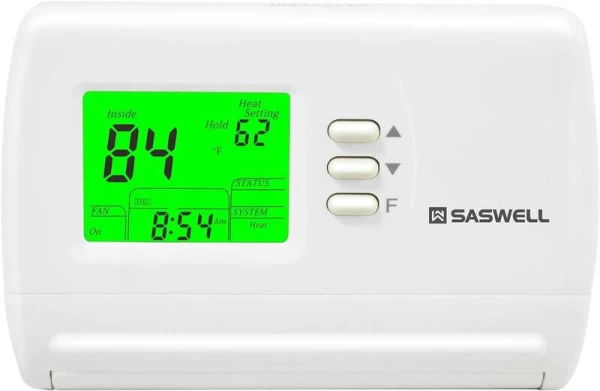
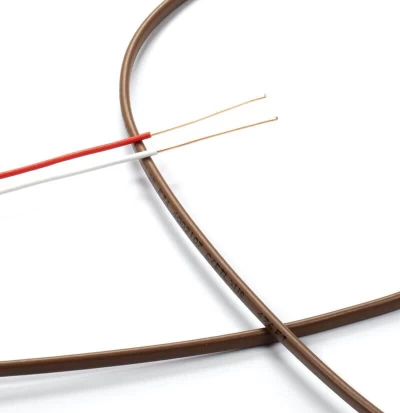
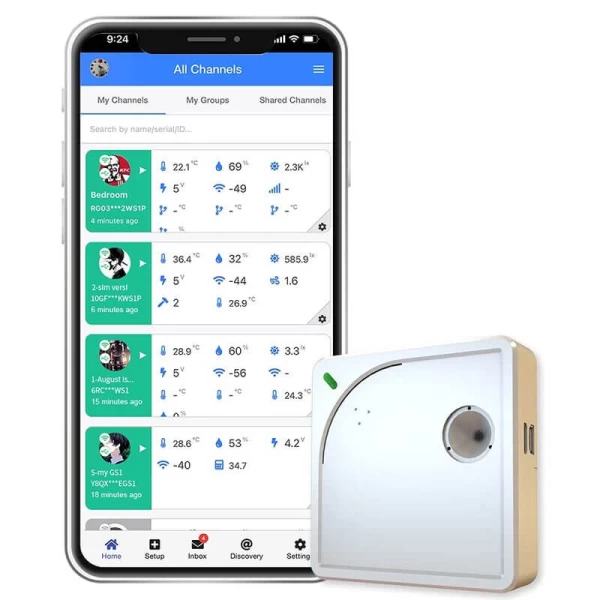
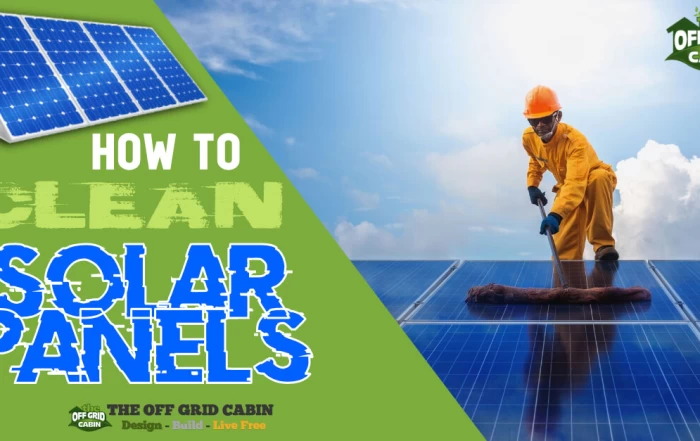
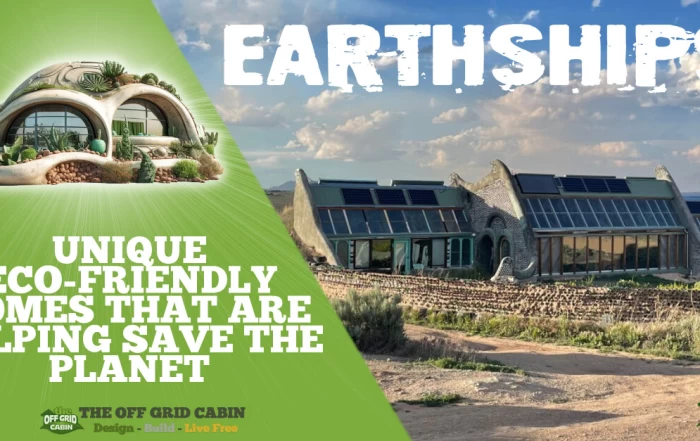
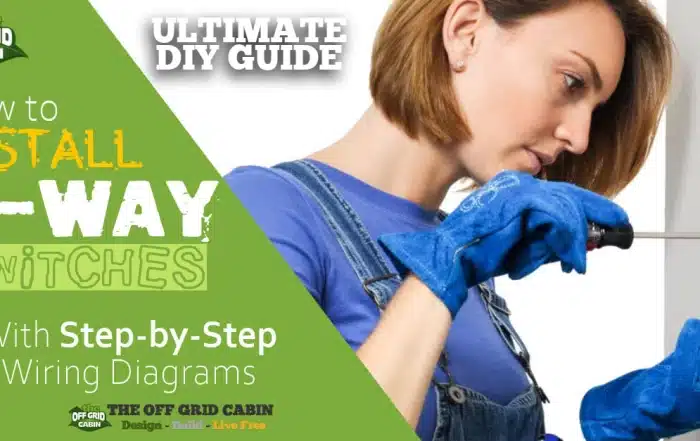
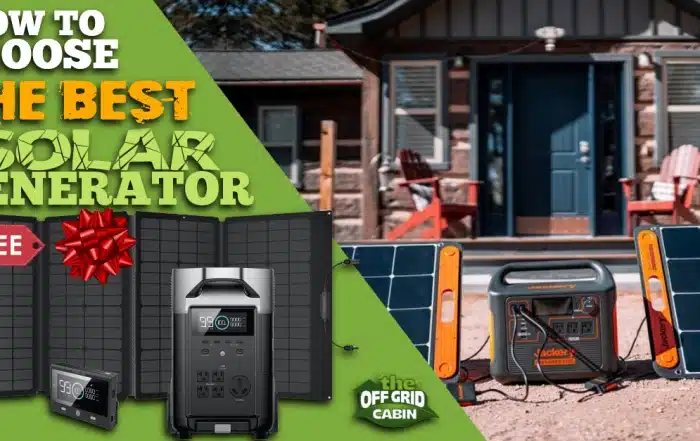
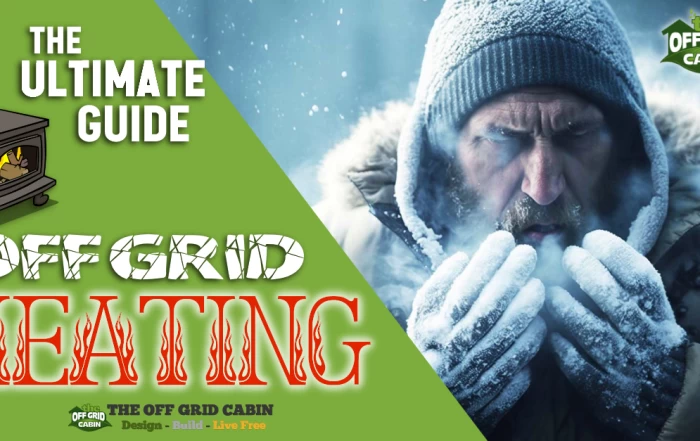
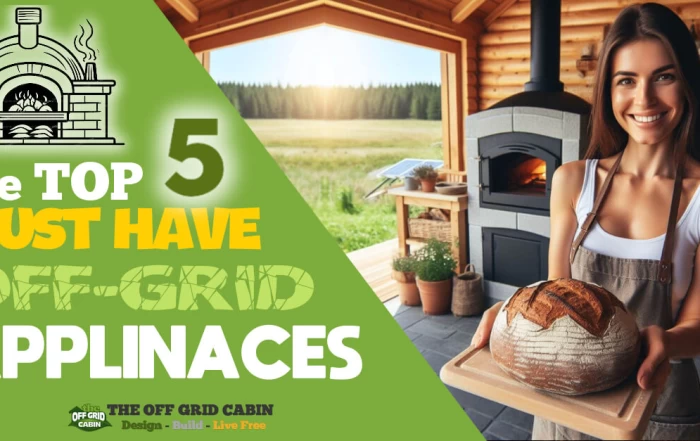
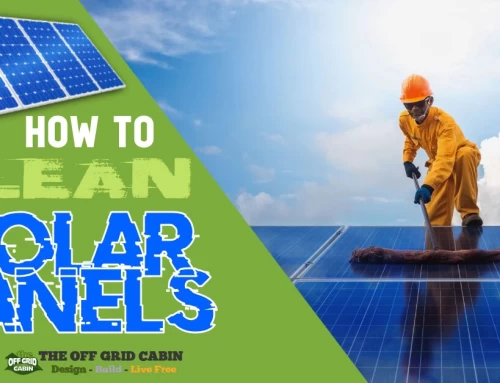
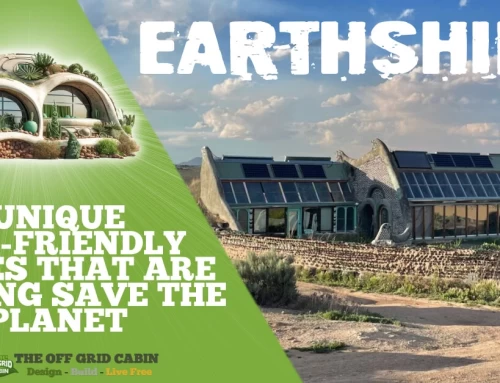

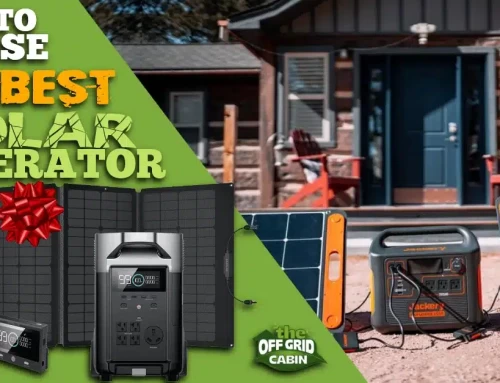
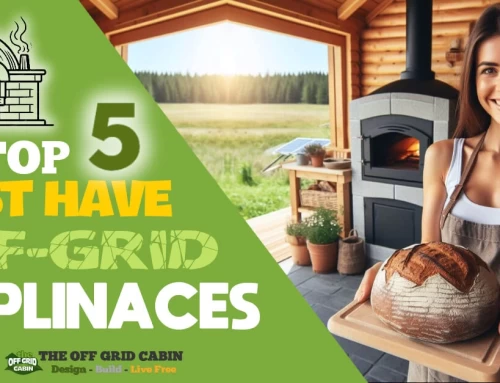
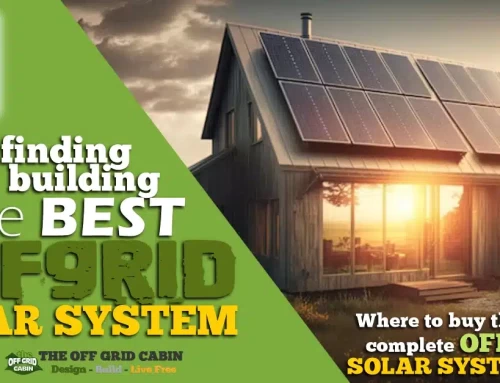
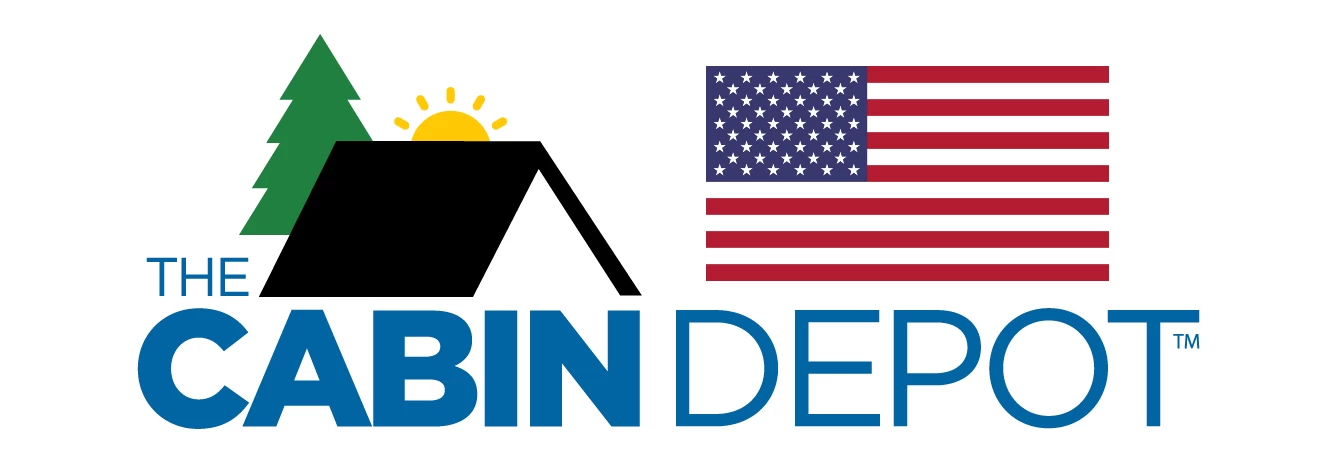
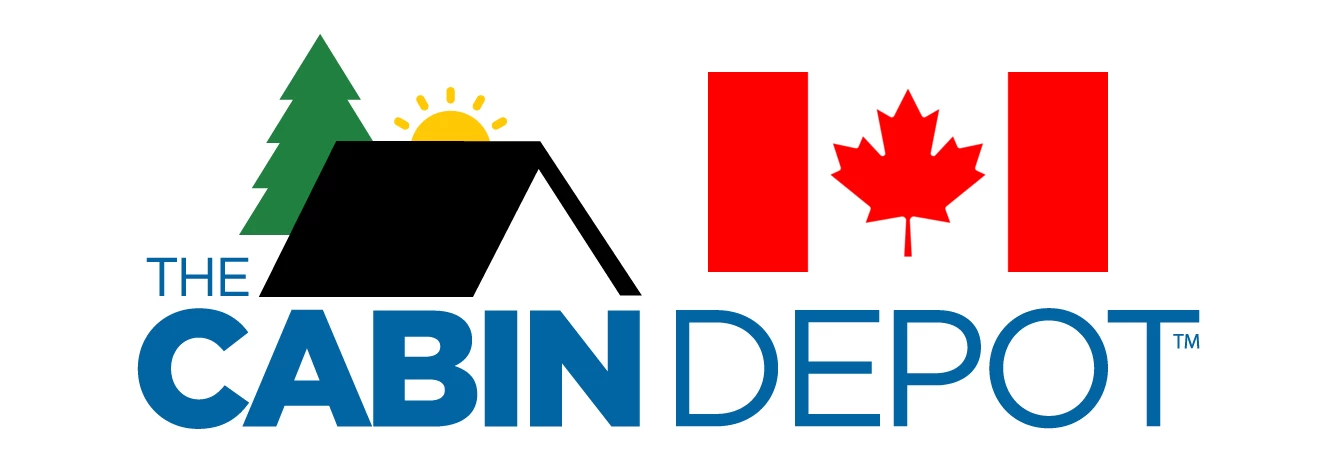
Leave A Comment